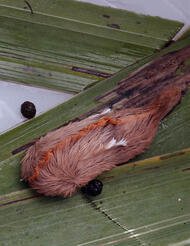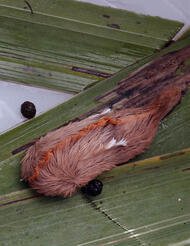Joro spiders aren’t the only creepy crawlies settling into people's yards this season. Fluffy in appearance but harmful to the touch, puss caterpillars are on the move in Georgia.
Unlike the invasive Joro spider, Nancy Hinkle, professor of entomology at the University of Georgia, said puss caterpillars are a native species that have lived in the Southeast for quite some time. She said 2020 has proved kind to the fuzzy creature, making them seem more prevalent than in other years.
“Like any population, they ebb and wane over time,” Hinkle said. “This year seems to be a good year for them. Obviously, they’ve been out all summer and eating. They’ve gotten big enough for people to notice them. They’re moving, and this time of year they’ll pupate.”
Once the caterpillars finish their metamorphosis, they transform into Southern flannel moths.
Garrett Hibbs, Hall County UGA cooperative extension agent, warns people against touching a puss caterpillar, no matter how soft they look. Hidden among their layer of fluffy fur are hollow spines, which contain venom.
“If you get some on you, those break off and cause irritation,” Hibbs said.
Hinkle said she has accidentally brushed up against a puss caterpillar on several occasions, and each time experienced a mild sting that goes away after an hour. However, for those who step or lay on the fuzzy creatures, she said the pain can heighten and last longer.
“It can hurt for 12 hours or so,” she said. “The pain radiates up through the lymphatic system. If you get stung on your hand, you’ll feel it throbbing in the armpit.”
If a person does become stung by one, Hibbs recommends sticking a piece of tape over the area of irritation and pulling it off to help remove the “urticating hair.”
If any of the venomous spines break under the skin, Hinkle said there’s not much people can do except treat the symptoms with an over-the-counter pain reliever or hold a cold compress to the area to reduce swelling. If the symptoms do not improve, contact a physician.
“They’re mostly found on trees and shrubs,” Hibbs said. “If you’re doing any kind of gardening or picking fruit, it’s something to be aware of. They look like a little wig walking.”
See original story by Kelsey Podo, Gainesville Times here.




